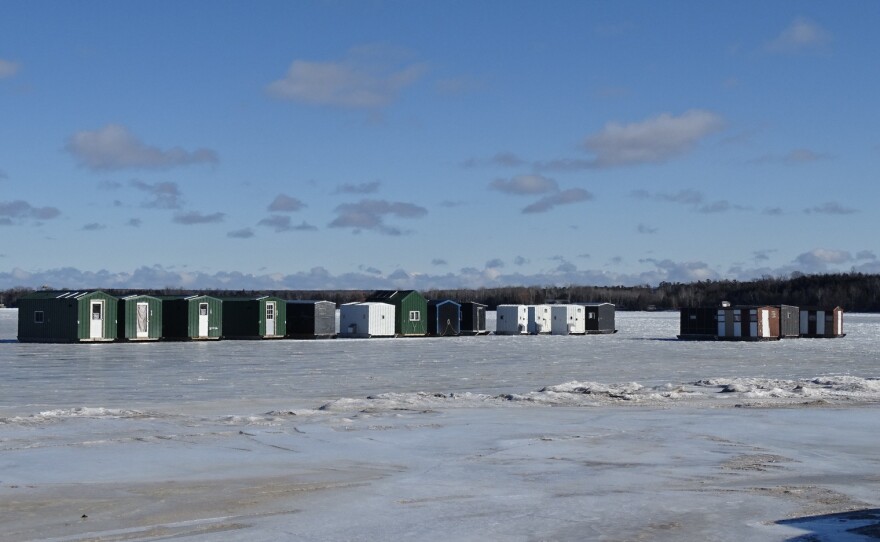It’s ice fishing season, and for Door County anglers that means catching lake whitefish. But warming winters are impacting the iconic species.
Zach Burgess has been fishing both sides of the Door Peninsula since he was a kid, and started his own guide business a little over 20 years ago. Each winter, he’s out on Lake Michigan with clients hoping to catch perch and whitefish. As soon as there’s enough ice cover, his busy season begins.
“My average group is two to three days,” he says.
Clients gravitate to Burgess’ expertise and can rent his heated ice shanties, some of which are equipped for overnight stays. This year, he set up his fleet about two miles out from a Sturgeon Bay boat launch — a spot he knows is good fishing.
Burgess is outside enough to have noticed increasingly erratic winter weather over time. He says this year’s winds have been especially brutal.
“When I first started, we never had this kind of wind before,” he says. “It’s just crazy how stuff has changed over the last 15 years.”
Last year was the warmest winter ever recorded in Wisconsin, and the longtime fishing guide has had to adapt. To make up for inconsistent ice cover, he’s invested in a couple of air boats — the kind you might see skimming the surface of the waters of the Everglades. He says he had to run all of his fishing groups that way last season.
“There was a lot of ice out there, but it just kept moving around,” he says. “One day you could take the air boat out and park it on top of a sheet of ice and fish, and the next day it would be open water there.”
Warming winters might be challenging for anglers, but imagine being the fish that’s being angled. Whitefish represent the backbone of commercial fishing, and generation after generation have harvested the silver-scaled, small-headed fish.

In Lake Michigan, the species has been buffeted by multiple threats —extensive harvesting and invasive zebra and quagga mussels. During the late '90s and early 2000s, Burgess says the whitefish population crashed.
“What happened is the zebra mussels were eating all the food the whitefish were eating, and all the whitefish got wiped out when the zebra mussels took off,” he says.
Scott Hansen, a DNR fisheries biologist based in Sturgeon Bay, says successful whitefish reproduction depends on ice cover.
“Whitefish spawn in November and the eggs sit on the bottom all winter long and they incubate until somewhere around March and April, so they need protection, they need stability, they need cold water,” Hansen says. “Oftentimes that’s under the ice.”

Hansen says, for example, if a storm comes through and there’s a lack of ice, the eggs can get dislodged and die before completing the incubation process. As for whitefish eggs that do survive the winter, they’re further threatened by warm winters and early springs.
“As those water temperatures increase, that’s their cue to begin the hatching process,” he says. “So they could hatch earlier and that could result in a mismatch with their food source.”
Given a shrinking food supply and rising water temperatures, Hansen says whitefish face a daunting future.
“We have the fishing, we have pollution, we have all the things that are going on that we watch out for as fisheries managers and as biologists, but these other additive effects of invasives and climate change are really putting a lot of pressure, a lot of stressors on the ability for these whitefish to sustain themselves from start to finish.”










